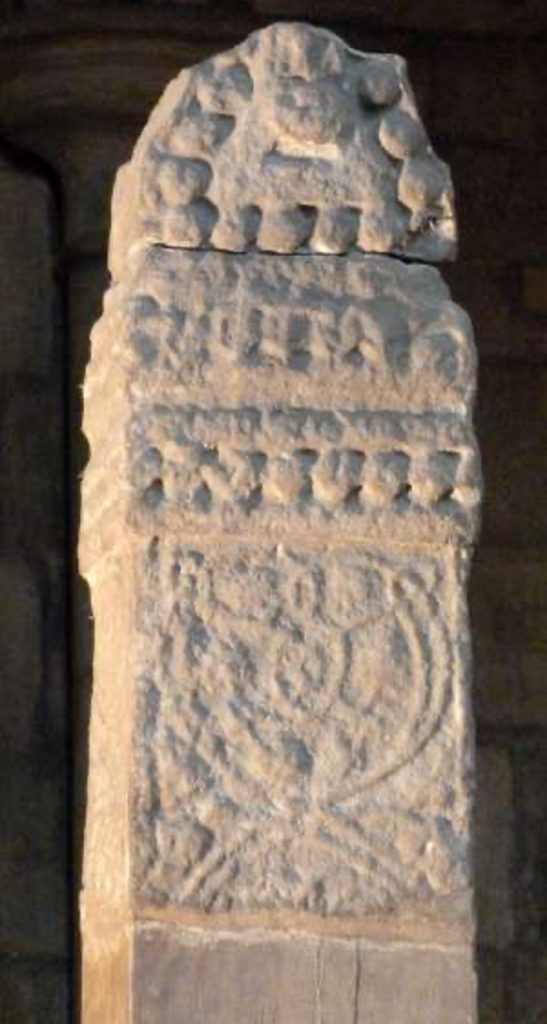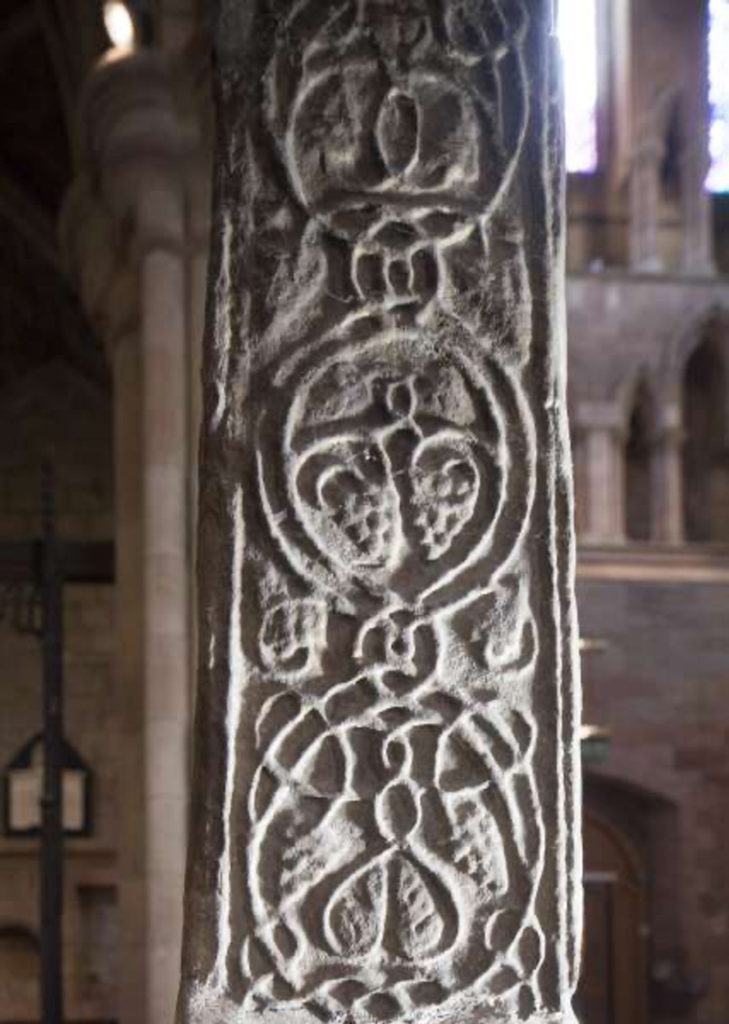Visitor Guide 1: Acca’s Cross

Acca’s cross, created in the 8th century, is a memorial to Acca, one of Hexham’s best beloved saints. Acca was Bishop of Hexham for 23 years, succeeding Wilfrid as Abbot and Bishop after being a loyal companion to his predecessor. He was an accomplished musician and theologian who devoted himself to building the faith in Northumbria. He adorned the church with paintings, sculpture, and rich hangings; he gathered sacred relics and built side-chapels to house them; he created a library of godly books; he brought from Kent a skilled teacher of Gregorian chant named Maban, to ensure that the music and liturgy of the church were as fine as any in Europe.
In his later years, Acca ran into difficulties, and it is believed he was deposed in 732, perhaps for political reasons linked with the overthrow of a Northumbrian king around the same time. When he died, his remains were buried at Hexham. By that time, his friend and biographer, Bede, was no more, so we have no reliable information about Acca’s later years. We cannot be sure whether he died in 737, as the Anglo-Saxon Chronicle says, or 740, as a later chronicler maintains. We do not know what he did or where he went in the years after his deposition.

We also, cannot be sure when Acca was recognised as a saint, though it was probably not until four centuries after his death, when after 1113 canons sent by the Archbishop of York re-started Hexham as an Augustinian priory, they took a lively interest in the early history of their church. Conveniently, the canons also rediscovered the ancient burial places of Acca and his fellow saints outside the eastern end of the church, where Acca’s remains had first been brought into the church early in the 11th century.
Sometime later the cross, which stood at the head of Acca’s grave, was broken up. This may have been before 1349, when the eastern chapels were built, or it may have been at the Reformation.
19th century antiquaries put the cross together again, but the cross is not complete. It is instead made up of several fragments that have been re-assembled. The top two pieces were rescued from a warehouse near the site of St Mary’s Church in the marketplace adjacent to the Abbey. The lower section of the cross spent time as the lintel over a farmhouse door in nearby Dilston!

Exposure over centuries has eroded the carved decoration of the cross and the colour has long since disappeared. But it is still possible to appreciate the dedication and skill of the craftsmen who employed their talents to adorn it with the vine scroll, leaves and fruit which is still visible today. However, the cross is worn and weathered, the inscription is no longer readable, and it lacks nearly a metre of the shaft and three parts of the crosshead. Yet it remains a significant remnant from the 8th century that has played a leading part in the story of the Abbey.
